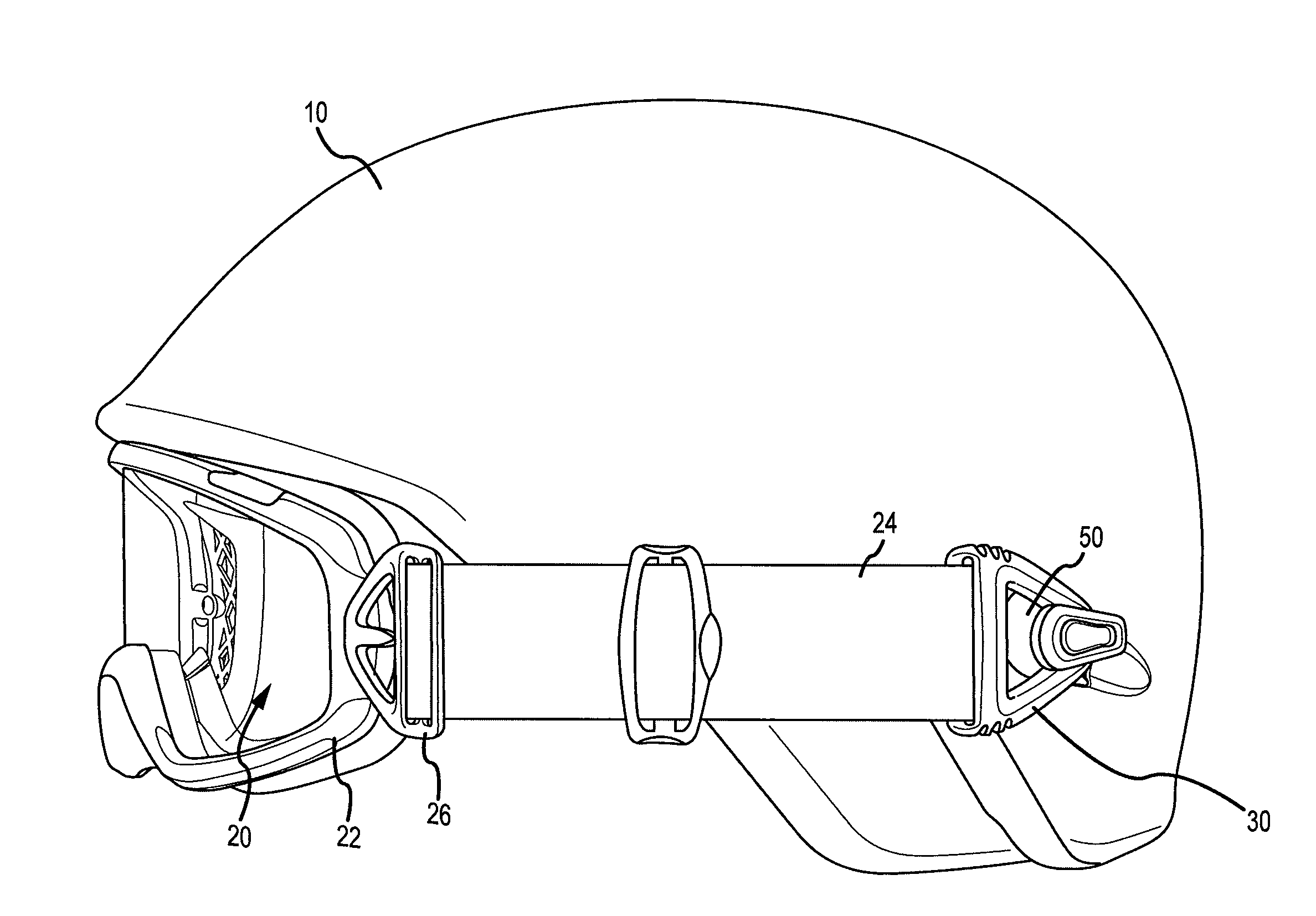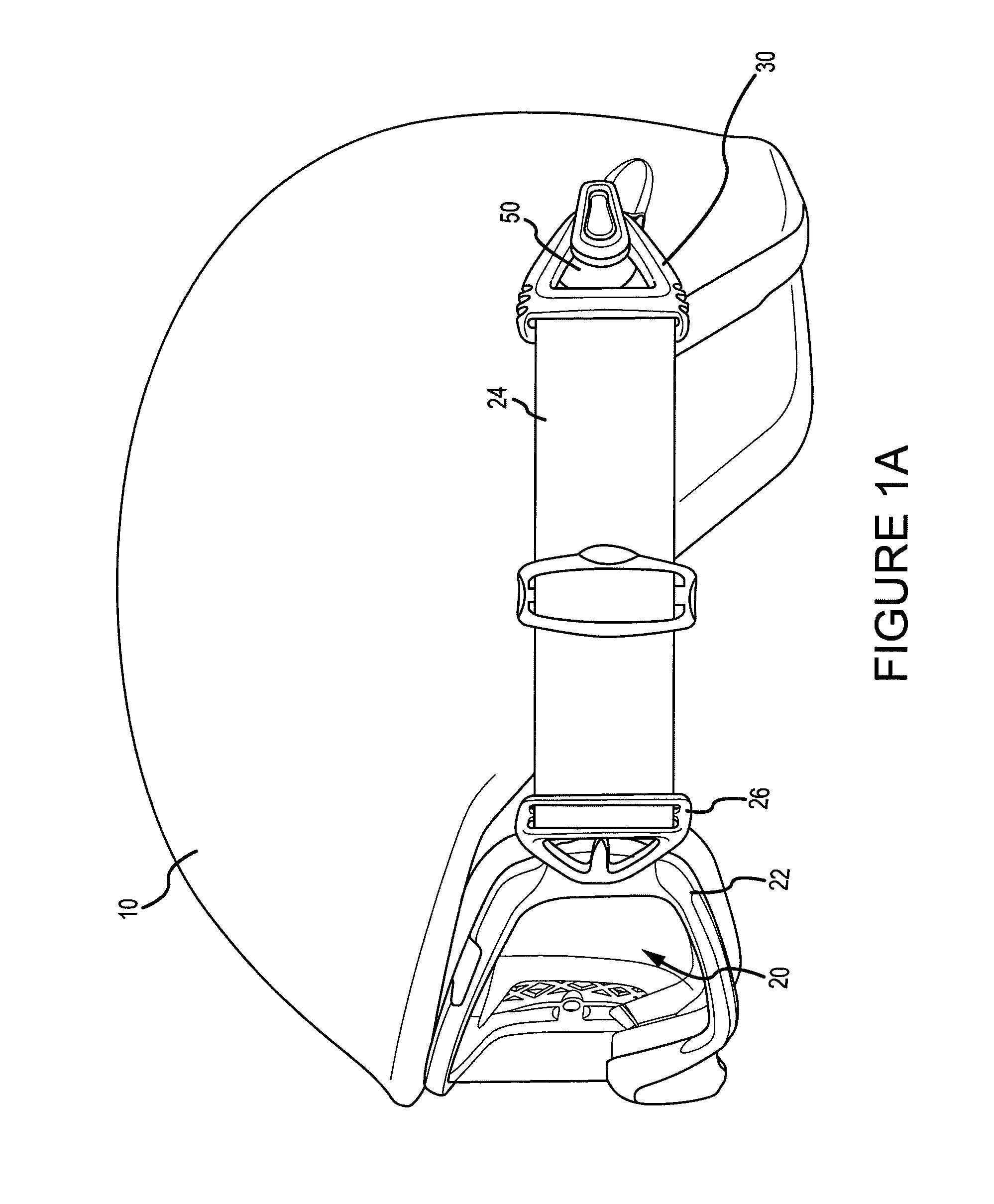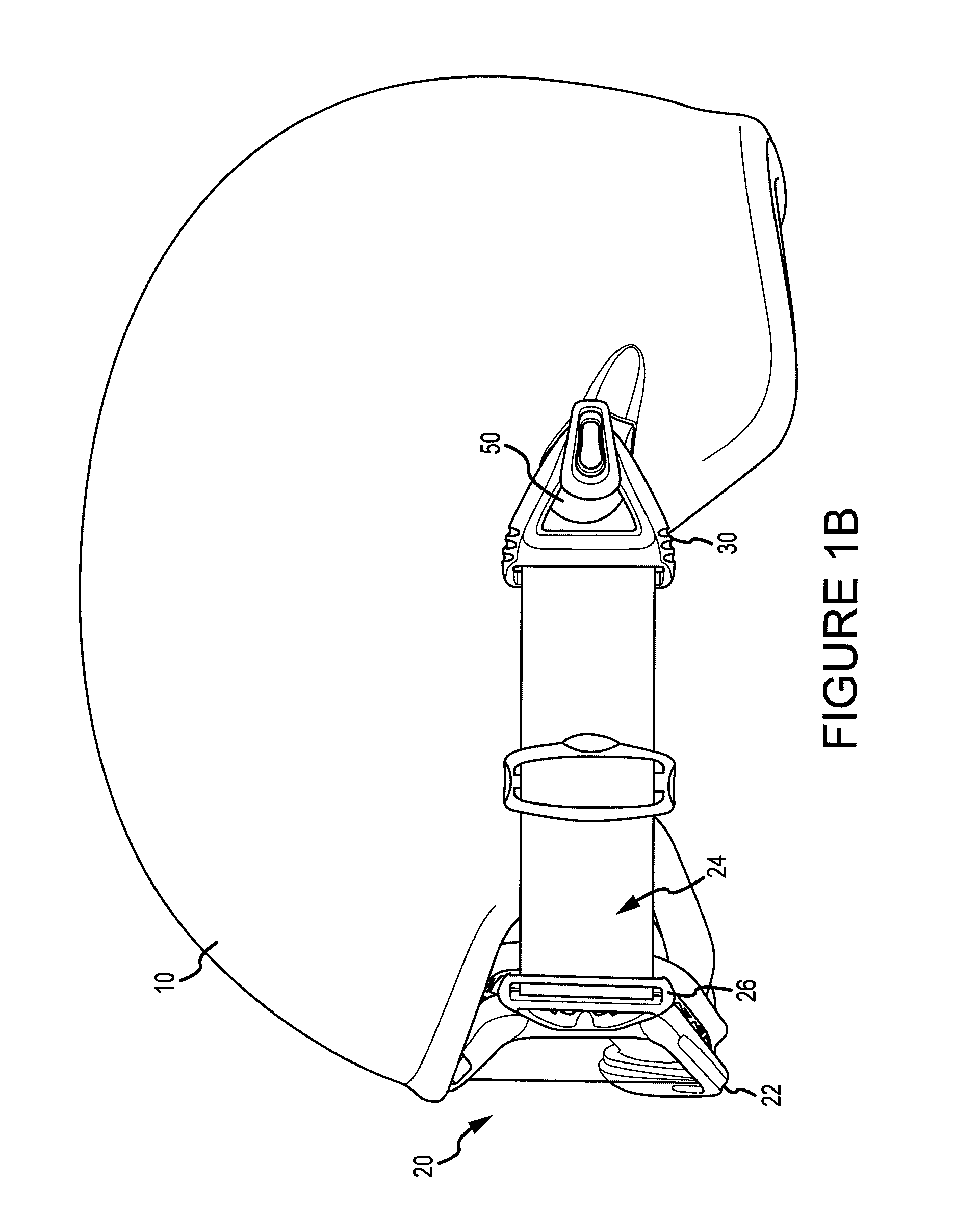Goggle attachment system for a protective helmet
- Summary
- Abstract
- Description
- Claims
- Application Information
AI Technical Summary
Problems solved by technology
Method used
Image
Examples
Embodiment Construction
[0011]The present application describes a goggle attachment system and a method of attaching goggles to helmets. Many specific details of certain embodiments of the invention are set forth in the following description and the Figures provide a thorough understanding of such embodiments. One skilled in the art, however, will understand that the present invention may have additional embodiments and that other embodiments of the invention may be practiced without several of the details and components described in the following description.
[0012]FIGS. 1A and 1B illustrate a goggle attachment system according to an embodiment of the invention for a helmet 10 and goggle 20. The helmet 10 and goggle 20 may be worn during activities, for example, skiing or snowboarding. Goggle 20 has a lens assembly 22 to which resilient strap 24 is attached by strap connector 26. The resilient strap 24 may be connected to the strap connector 26 by securing the strap 24 through a loop of the strap connector...
PUM
| Property | Measurement | Unit |
|---|---|---|
| Shape | aaaaa | aaaaa |
Abstract
Description
Claims
Application Information
 Login to View More
Login to View More - R&D
- Intellectual Property
- Life Sciences
- Materials
- Tech Scout
- Unparalleled Data Quality
- Higher Quality Content
- 60% Fewer Hallucinations
Browse by: Latest US Patents, China's latest patents, Technical Efficacy Thesaurus, Application Domain, Technology Topic, Popular Technical Reports.
© 2025 PatSnap. All rights reserved.Legal|Privacy policy|Modern Slavery Act Transparency Statement|Sitemap|About US| Contact US: help@patsnap.com



